The Ultimate Guide to Building and Optimizing Your Sales Pipeline
Anya Vitko
Maintaining a healthy sales pipeline is the foundation of successful sales activities. A user-friendly dashboard that visualizes your sales pipeline effectively can not only help you with sales forecasts but also provide you with insights into how to improve your sales process.
In this article, we will differentiate between a sales pipeline and a sales funnel (or is it a sales flywheel?), explore the benefits of having a sales pipeline as a backbone of your sales department, and dive into tips on how to best sustain its health for securing steady revenue growth.
Here’s what we will cover:
- What Is a Sales Pipeline?
- Benefits of Using a Sales Pipeline
- Essential Stages of a Sales Pipeline
- Building Your Sales Pipeline
- Optimizing Your Sales Pipeline
- Advanced Pipeline Strategies
- Common Pipeline Mistakes and How to Avoid Them
- Tools and Technologies for Pipeline Management
What Is a Sales Pipeline?
A sales pipeline is a representation of the steps that salespeople take to generate leads and nurture them to the point when they either convert or drop off.
In most sales departments, the sales pipeline outlines the following steps:
- Lead Generation
- Lead Qualification
- Demonstration
- Proposal
- Negotiation
- Closing
- Follow-up

The concept of a sales funnel captures the steps that customers follow when interacting with brands. The top of the funnel corresponds with someone becoming aware of your brand. In the middle of the funnel, a lead becomes an opportunity. At the bottom of the funnel, the opportunity decides to either sign the deal or reject the offering.

Interestingly, a sales funnel may no longer effectively represent a buyer’s journey in B2B and B2C sales. A sales flywheel is a more suitable framework for companies that sell products and services that intend to improve comfort. In this framework, customers are propelled forward by a smooth sales process.
Whether you prefer to visualize your buyer’s journey as a funnel or a flywheel, a sales pipeline remains a useful tool for mapping out your sales process, detailing the steps that your sales team follows when interacting with potential buyers.
Benefits of Using a Sales Pipeline
With information about most products and services available online, modern customers no longer rely on sales teams as their sole source of expertise. Rather, the sales process nowadays is far more focused on making sales as frictionless as possible.
Having all the members of your sales team well-trained in the sales process helps eliminate friction because, at each stage, your sales reps know exactly what to say and do. An efficient sales team that smoothly walks your potential customers through the deals is far more likely to drive your revenue than a team where sales reps jump to the negotiation stage without first doing a demonstration, for example.
Also, with a well-defined sales pipeline, your sales reps are less likely to forget to follow up with customers after a meeting, for example. Alternatively, you could automate the process by leveraging Yesware’s email campaigns.

These allow your sales reps to create emails that will get sent out automatically depending on the recipient’s actions. For example, if a recipient hasn’t responded to the first email in the sequence, a follow-up email could be sent automatically in a couple of days.
When your sales managers visualize your sales pipeline with the help of a dashboard, they get an opportunity to track important metrics, such as conversion rates and sales cycle, and perform calculations, such as calculating sales velocity.
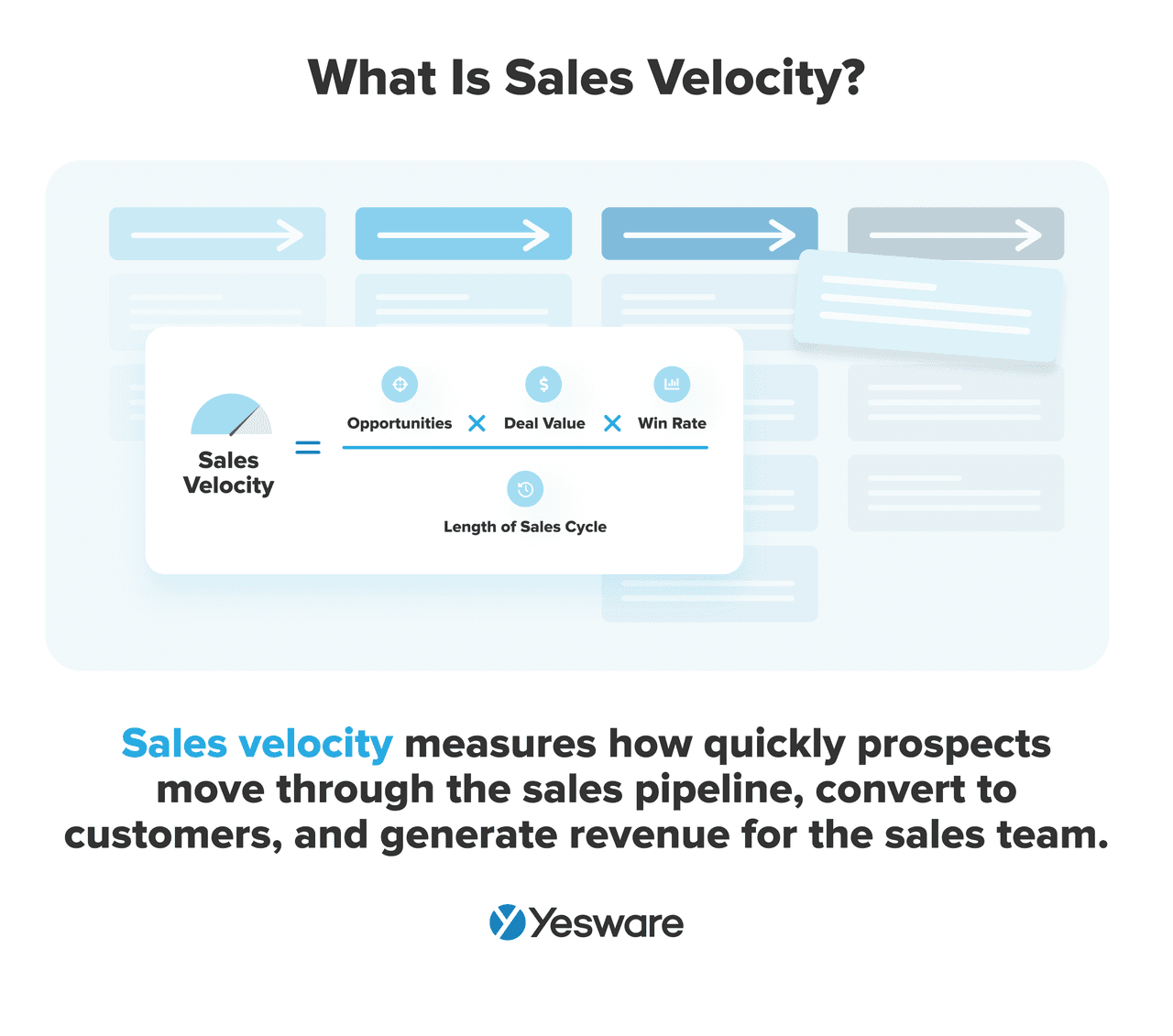
These metrics and calculations are important for assessing the effectiveness of your sales department and identifying any challenges and bottlenecks to remove as much friction from the sales process as possible.
Essential Stages of a Sales Pipeline
Let’s dive right into the sales pipeline stages and management best practices every sales team should be aware of.
1. Prospecting/Lead Generation
There are many strategies that sales reps can use for lead generation.
When done right, cold outreach is the most effective lead-generation method for sales. It can be done by email, phone calls, and LinkedIn Sales Navigator.
The magic bullet that ensures the success of cold outreach is showcasing the value of your products and services. For example, if you work in a sales position at a digital marketing agency, sending out a report that assesses the quality of your potential client’s online presence could be a great way to capture their attention.
Vendasta’s Snapshot Report identifies how well businesses perform in the following marketing areas:
- Business Listings
- Reviews
- Social Media Presence
- Website Quality
- Digital Advertising Effectiveness
- SEO
- Ecommerce
2. Lead Qualification
BANT framework for scoring leads was developed by IBM in the last century. While it remains widely used, the sales process has become far more nuanced.

This necessitated the emergence of more finetuned frameworks that go beyond BANT’s guidelines for assessing the following aspects of potential customers:
- Budget: Does the prospect have enough money to afford the solution?
- Authority: Does the prospect have authority to sign the deal?
- Need: What is the extent to which the prospect needs the product or service?
- Timeline: How urgent is the prospect’s need for the purchase?
Many sales teams nowadays choose to add other assessment frameworks to their mix of lead qualification strategies.
For example, the GPCT framework replaces budget, authority, and need from the BANT framework with an assessment of the prospect’s goals, plans, and challenges. In some cases, this is far more efficient because of the following reasons:
- With the proliferation of financing options and other strategies for flexible payments, the budget is no longer a deal breaker for a vast majority of B2B customers.
- Authority is also far more diluted since most B2B deals involve multiple decision-makers, such as the CEO, CFO, CIO, CMO, and VP of Sales.
- The need is also less clear-cut since the capitalist market is oversaturated with products that solve the same customer pain points and differ ever so slightly from each other.
More nuanced frameworks for lead qualification give sales teams more leeway in terms of questions to ask when engaging in initial communications with prospects. These nuanced frameworks also help build rapport between salespeople and prospects. It is far more humane to ask, “What are your and your company’s goals?” than “Do you have a budget set aside for our solution?”
Another lead-scoring technique for sales teams is analyzing the extent to which prospects engage with their outreach efforts. For example, a lead could receive points if they open an attachment sent in a follow-up email or lose points if they unsubscribe from the email list. Here’s a sample model:

Tip: Yesware’s email tracking feature can help you with lead scoring.
![]()
3. Initial Contact: Meeting/Demo
It’s important to make scheduling meetings with sales reps as smooth as possible. Luckily, modern tools, such as Yesware’s Meeting Scheduler make setting appointments a breeze. With Yesware, sales reps can share their calendar links with prospects, get booking confirmations, and automate meeting reminders.
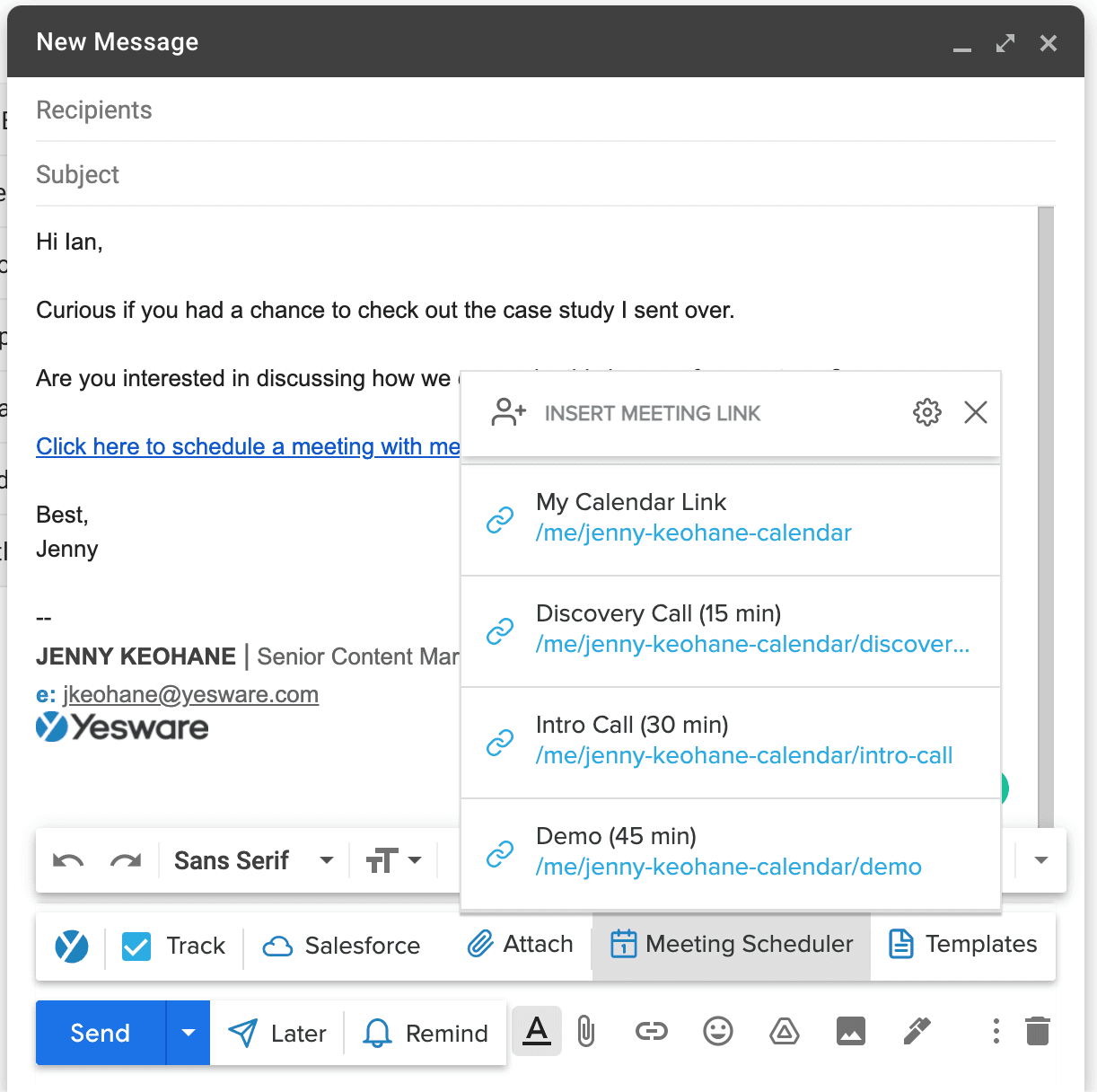
It goes without saying that a successful demo needs to function like a well-oiled machine. It’s paramount to kick things off with a strong sales pitch that articulates your brand’s authority and unique selling points.
When it comes to the bulk of the meeting, sales reps need to be well familiar with the product or service to be able to answer any questions and address any doubts. This is where sales enablement comes in as an indispensable part of sales pipeline management.

Uncovering the prospect’s pain points is another priority during the first meeting. Here are some examples of pain points common among B2B clients:

4. Proposal/Quote
No matter how effective the demo is, its success is dependent on the strength of the overall offer. The key ingredients of irresistible sales offers are:
- An attractive proposition, such as a free trial or a 24/7 support desk
- Measurable benefits and results backed up by numbers and customer reviews
- Guarantees, such as satisfaction or money-back guarantees
- Time efficiency with as little back and forth in the process as possible
5. Negotiation
During this stage, handling potential customer objections effectively is key to success. The LAER rule is a popular method for addressing common obstacles that may prevent a prospect from entering the negotiation stage.
According to LAER methodology, sales reps need to nail down listening, acknowledging, exploring, and responding.
Research into B2B sales reveals that the most successful talk-to-listen ratio is 43% of the time spent speaking to 57% of the time spent listening.
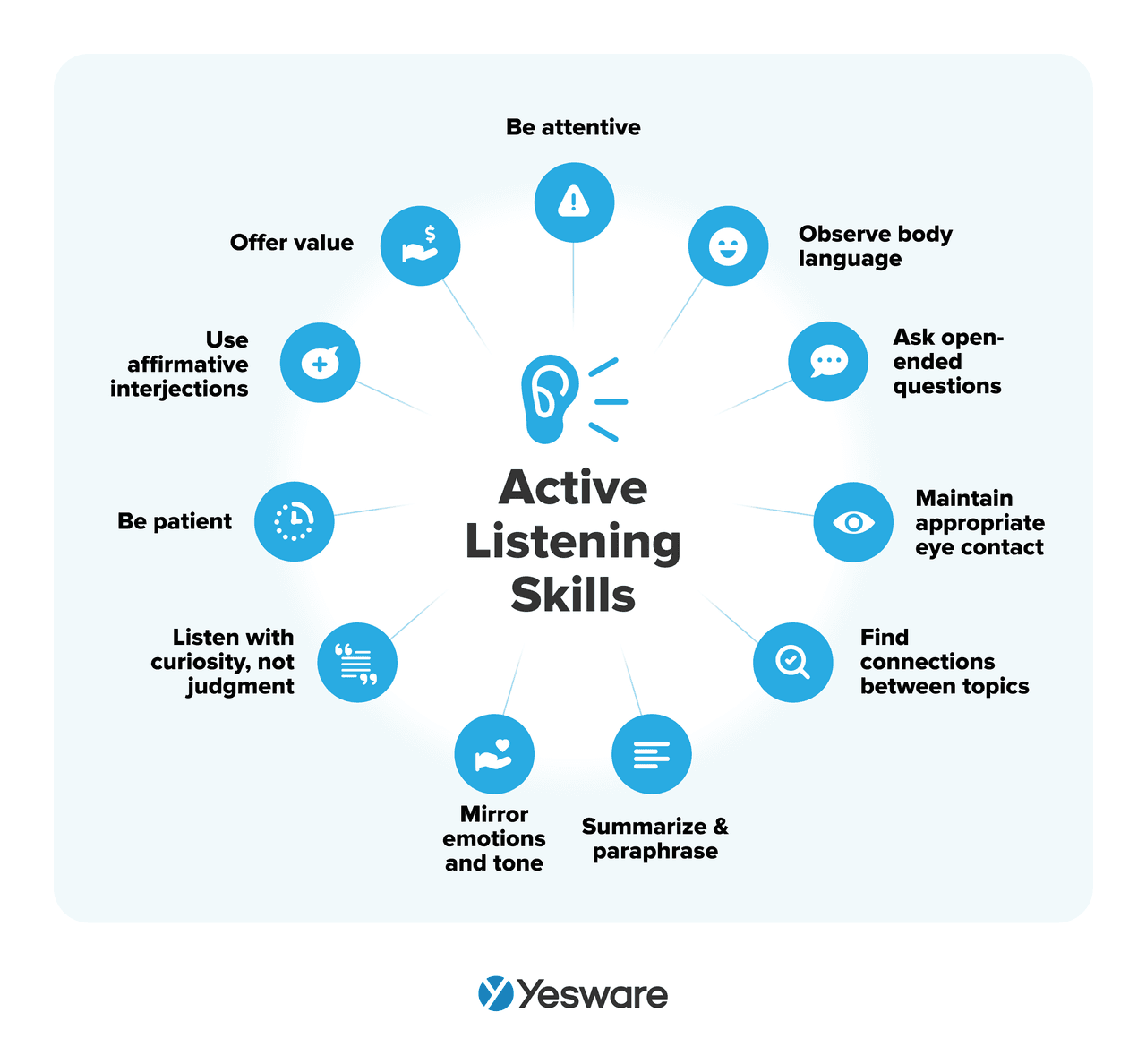
Acknowledgment and exploration go hand in hand when sales reps demonstrate they value the potential customer’s concerns by nodding and restating, and then continue the conversation by digging into the root causes of the customer’s doubts.
Here are some tips on how to effectively respond to various types of sales objections:
- If a prospect is concerned with the cost of the solution, it’s important to emphasize the unique strengths that would justify pricing and guarantee ROI.
- When faced with lack of trust, sales reps could resort to sharing client testimonials and case studies to prove the brand’s authority.
- If a prospect doesn’t demonstrate urgent need for the product or gives vague answers about their purchasing timeline, it could be a great opportunity for open-ended questions to better score the prospect and determine whether it’s a good idea to keep them in the sales pipeline.
Also, according to Dr. Robert Cialdini, there are 6 principles of persuasion that sales teams should master:
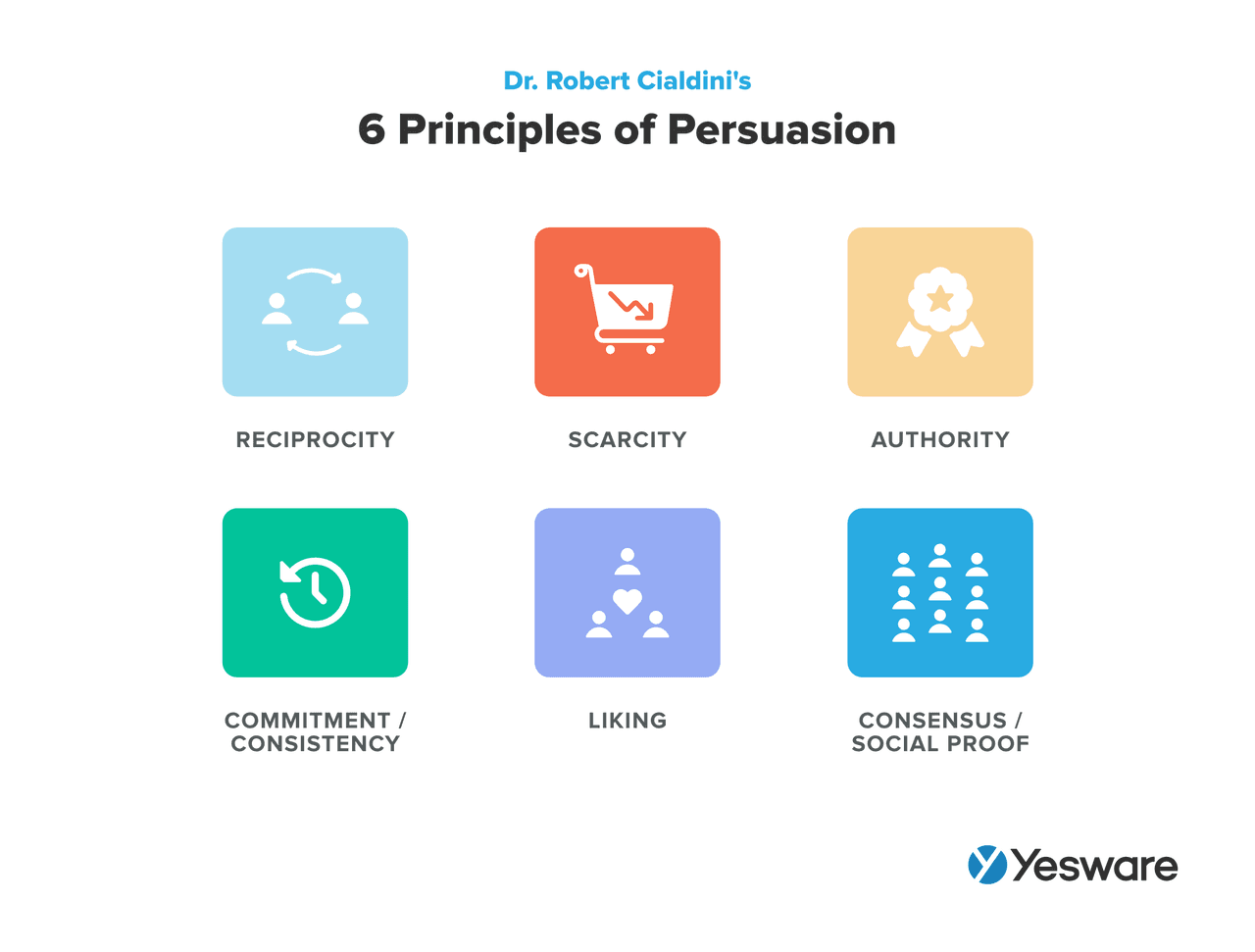
6. Closing
There are a number of closing strategies that fit depending on your industry and the degree of confidence in your opportunity’s likelihood of conversion:
- An assumptive close when a sales rep asks about the details of the purchase, skipping the step to confirm whether the prospect is ready to buy, is best used when there’s confidence that the product is truly the best option for the customer.
- A puppy dog close is an offer of a free trial based on the assumption that if the prospect tries the product or service without paying upfront, they will fall in love with it and make the investment to have it available in the future.
- In a scale close, sales reps get the prospect to rate the conversation on a scale from 1 to 10 in order to get a chance to either address any last minute sales objections or confirm that the prospect is unlikely to convert and remove them from the sales pipeline.
- A scarcity sales close happens when sales reps leverage discounts and limited time deals to entice prospects to convert now or never.
- In takeaway closes, sales reps use reverse psychology to suggest that the prospect may not be a good fit for the product or solution, capitalizing on their wishes to have access to luxury things that they may not need or have enough budget for.
7. Post-Purchase Follow-up
This is key to maintaining relationships, regardless of whether the financial transaction happened or not.
Even if the prospects walk away without committing to the deal, it’s important to follow up. Not only do the majority of potential clients say “no” before saying “yes”, but follow-ups help sales teams keep their brands on top of mind, increasing the likelihood of prospects coming back when they’re ready to convert.
If the deal is successful, follow-ups are important to provide support with any issues the customers might encounter when adopting the solution, as well as to open up opportunities for cross-selling and upselling.
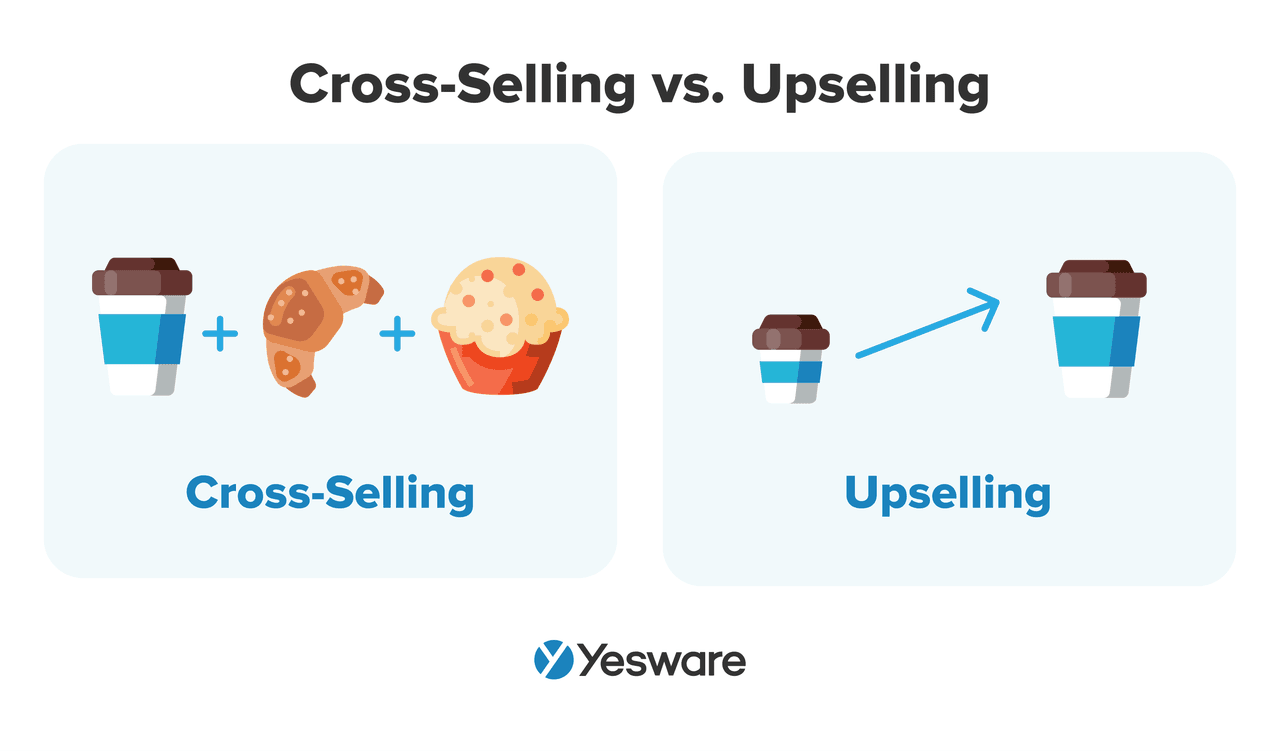
Building Your Sales Pipeline
So, how do you build sales pipeline?
The pipeline needs to account for each of the aforementioned steps of the sales process.
A Customer Relationship Management (CRM) system helps organize and track interactions with prospects and customers. It also helps organize sales reps into teams and set sales goals.
Sales pipeline dashboards offer analytics that are useful for gauging the health of the sales pipeline. For example, a sales performance dashboard helps assess total revenue, profit margins, sales growth, and closing rates.
Optimizing Your Sales Pipeline
Tracking various metrics with the help of your sales pipeline dashboards can give you ideas about how to improve sales processes.
Let’s say your sales conversion dashboard shows a low lead-to-opportunity ratio. In this case, it could be worth investigating the root cause of the problem. If the sales team gets high numbers of poor-quality leads, you may want to do some training on how to improve lead generation and prospecting.
Looking for a tool to help? Grab our template below to help organize prospect research and data.
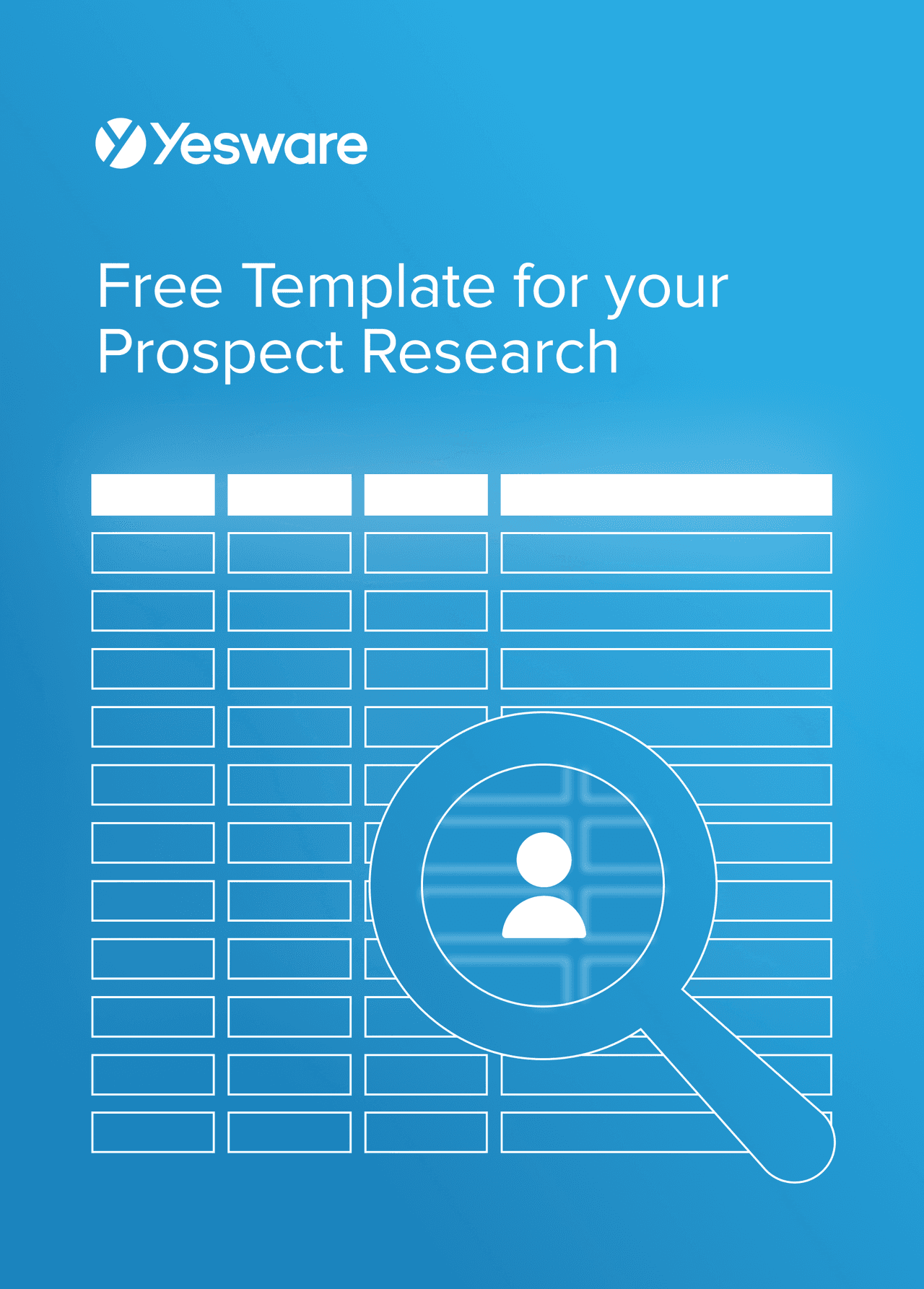 Free Template for Your Prospect ResearchThis customizable template will help you organize all prospect research in one place so you can quickly personalize outreach.
Free Template for Your Prospect ResearchThis customizable template will help you organize all prospect research in one place so you can quickly personalize outreach.
On the flip side, if the problem lies in poor-quality first meetings and demos, sales enablement could include training on how to run demos more effectively.
Advanced Pipeline Strategies
Sometimes you may benefit from setting up multiple sales pipelines to reflect different lengths of sales cycles.
For example, if you work at a general manufacturing company, you could create one sales pipeline for large orders and a separate one for small batches.
When it comes to real estate, if your company helps both commercial and residential clients, you could establish a pipeline for each customer segment.
If your roofing company offers both roofing and siding services, the sales pipeline for the former would vary from the one tailored to the latter.
Also, multiple sales pipelines are indispensable in account-based selling (ABS). ABS is the type of selling that is most appropriate for high-value accounts that require personalized solutions. When engaging in ABS, it’s important to develop different sales pipelines tailored to different positions of decision-makers. For example, a sales pipeline for pitching the solution to managers could look different from the one tailored to SEOs.
Common Pipeline Mistakes and How to Avoid Them
Poor data hygiene often results from sales reps forgetting to update CRM. This can make pipeline reviews ineffective since sales managers do not get the full picture of the sales process. To avoid this problem, sales departments should invest in CRMs with automated workflows to make sure no opportunities slip through the cracks.
The need for manual actions may also cause inefficient follow-ups. Here are some stats to explain why that’s a big problem:

To make sure your sales reps avoid the fate of the 44% of sales reps who give up too early, opt for automation. As mentioned earlier, Yesware can help you set your follow-ups on autopilot with customizable email templates.
Another common problem with sales pipelines is having no consensus on when to move prospects from one stage to the next. Clarify the criteria your sales reps should use to move prospects from one stage of the sales pipeline to the next.
For example, if the prospect has the budget for the solution and has articulated how the solution will help them solve their pain points, they should be moved from the prospecting stage to the first meeting stage.
Tools and Technologies for Pipeline Management
The market has a variety of tools to make pipeline management as easy and effective as possible.
For example, sales automation tools like Yesware help sales teams streamline and manage their pipeline with automation features, tracking functionalities, and in-depth reporting and analytics.
CRM tools like Vendasta’s CRM can help your sales reps focus on customer interactions by automatically scoring leads based on their levels of engagement, providing configurable automation and up-to-date sales collateral, as well as offering Yesware integration.
Start exploring these solutions today and turn your sales pipeline management into a breeze!
Get sales tips and strategies delivered straight to your inbox.
Yesware will help you generate more sales right from your inbox. Try our Outlook add-on or Gmail Chrome extension for free, forever!
Related Articles
Casey O'Connor
Casey O'Connor
Melissa Williams
Sales, deal management, and communication tips for your inbox

